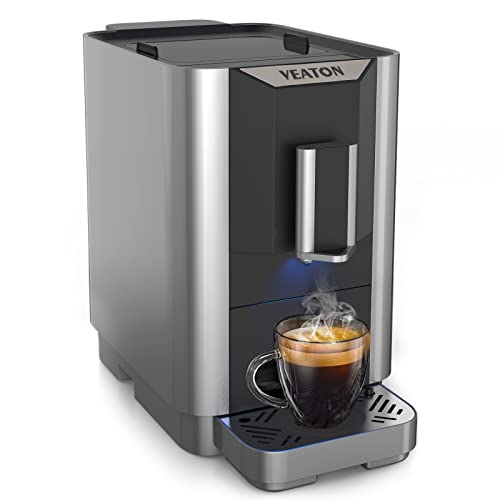Coffee and Espresso Machines
Espresso machines utilize pressure to make water into finely ground and tamped beans. They create a rich and delicious cup of coffee.

Good Housekeeping Institute experts recommend models that are brewed at a minimum of 9 bars to ensure the best extraction. Beware of manufacturers who claim to use more pressure than is necessary.
Types
The espresso machine, also referred to as a coffee and espresso maker, brews the concentrated, higher-quality coffee you love from your favorite drinks at an average of 9 bars of pressure. These machines tend to have various features, including temperature control and brew strength with programmable brewing as well as different sizes of drinks. Certain machines might come with manual or automatic steam wands for creating texturized milk to create latte art. There are three main types that are semi-automatic; super-automatic; and automatic. Each one has its own level of oversight and automation.
The most popular espresso machine model for specialty coffee shops is semi-automatic models. Semi-automatic espresso machines give baristas to control the brewing process however they aren't as user-friendly as fully automated or automated machines. You still need to grind beans, fill and tamp the portafilter and alter the extraction time to achieve the best espresso shot.
Automated machines have a built-in mill and measure and grind your grounds. They automatically pour the correct amount of water to extract the espresso, and typically have a programmable drink size function. Our lab tests revealed that they were the most favored kind of espresso machine. They provide a nice combination of control and consistency.
Functions
You'll require a reservoir to hold the water you need to make coffee, regardless of whether you select a steam-driven or pump-driven machine. You'll have a heating component that will heat the water in order to create the pressure necessary to extract the coffee from the grounds.
When the button to brew is pressed, the water inlet valve is sealed to ensure that only hot water under intense pressure can flow through the portafilter and into the ground coffee. It takes around 25 seconds for the water to brew into espresso.
The hot-water tubing, referred to as the insulated tubing, extends from the reservoir to the spout on the top of your machine. The resistance heating element warms the water while it goes through the warming plate of metal and the aluminum tube.
After the spout has turned on, place your cup underneath the spout, so that the espresso flows into your drink through the portafilter. Additional Info has a steam wand that you can use to heat and froth milk for coffee-based drinks such as cappuccino and the latte.
Automated machines eliminate the guesswork involved in making coffee. They are easy to operate, programmable and can measure and grind beans as well as the tamping down process. In our Lab tests, they are found to perform best because they are simple to use and don't require any special skills from the user.
Materials
The inside of an espresso machine is a world of copper tubes, boilers made of stainless steel and intelligent firmware. It may appear to be complicated however, at the heart they perform one thing: push hot water through finely-ground coffee.
When looking for an espresso maker, think about the dimensions and space requirements, drink options, energy-saving options and brewing precision. Also, look for a steam knob which will activate the steam wand for frothing milk and making the latte art. A gauge of pressure on the front of the machine lets you know the boiler and pump operating pressure. You should look for a coffee maker with two needles that show the maximum and minimum pressure.
If you want more than just espresso then choose the machine that comes with different brew sizes. This includes ristretto. There are models that come with an hopper that can be removed for free, effortless frothing, and the ability to quickly change between different types of milk. If you're dealing with hard water, opt for the model that has an integrated water softener to prevent the buildup of minerals and keep your espresso tasting fresh.
Certain manufacturers employ a PID (proportional, integral, digital) thermostat to keep a certain temperature range for espresso brewing. This feature can ensure an exact, high-quality cup of espresso each time. This feature also helps reduce expenses for energy as the machine only runs when it is required.
Maintenance
Since espresso and coffee machines become more accessible for home use, the regular maintenance of the equipment becomes even more crucial. The most efficient equipment can make a a huge difference in the quality of your coffee but only if it's well maintained.
A regular maintenance and cleaning routine should include everything from cleaning the steam wand and group head, to descaling, to changing the water filter frequently. If you make between two and five cups of coffee per day, it's recommended to clean the main parts of your machine once a week. However, some parts of the machine, such as the grinder and water tank are required to be cleaned every two or three months.
It is also recommended to flush the machine each week. This is done by placing the portafilter in its place and running the brew cycles several times. This helps to remove any stray coffee grounds or oils that are left behind. You can also clean the portafilter using the brush and cleaner specially designed for espresso machines.
Maintaining your coffee maker and espresso properly will help it last longer. It is important to maintain your expensive espresso machine.
